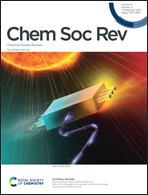How can we use the endocytosis pathways to design nanoparticle drug-delivery vehicles to target cancer cells over healthy cells?
Abstract
Targeted drug delivery in cancer typically focuses on maximising the endocytosis of drugs into the diseased cells. However, there has been less focus on exploiting the differences in the endocytosis pathways of cancer cells versus non-cancer cells. An understanding of the endocytosis pathways in both cancer and non-cancer cells allows for the design of nanoparticles to deliver drugs to cancer cells whilst restricting healthy cells from taking up anticancer drugs, thus efficiently killing the cancer cells. Herein we compare the differences in the endocytosis pathways of cancer and healthy cells. Second, we highlight the importance of the physicochemical properties of nanoparticles (size, shape, stiffness, and surface chemistry) on cellular uptake and how they can be adjusted to selectively target the dominated endocytosis pathway of cancer cells over healthy cells and to deliver anticancer drug to the target cells. The review generates new thought in the design of cancer-selective nanoparticles based on the endocytosis pathways.



 Please wait while we load your content...
Please wait while we load your content...